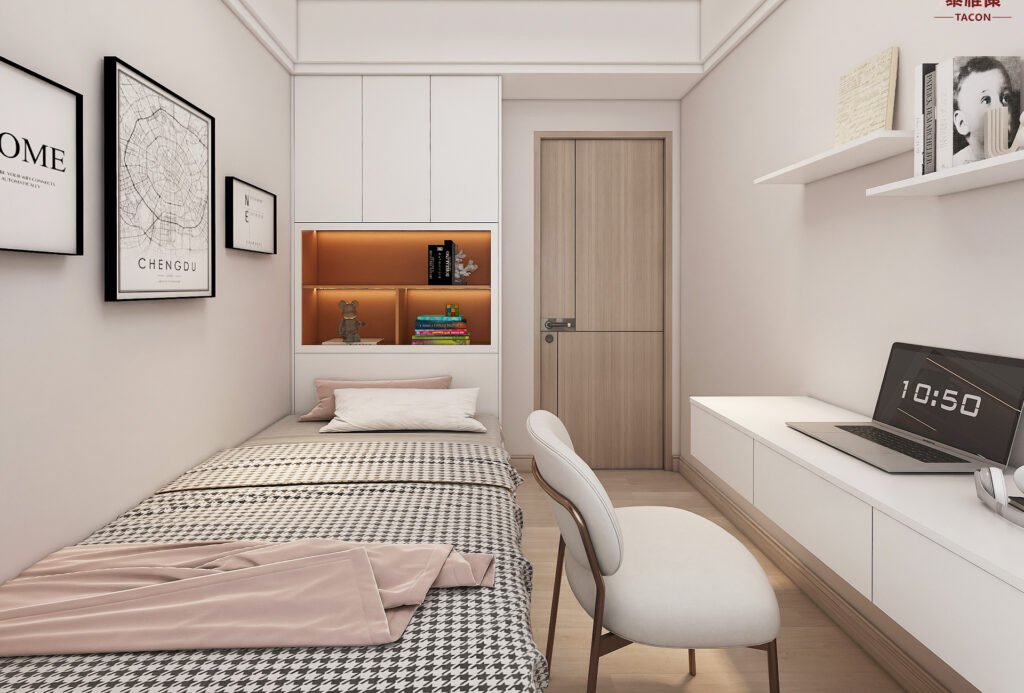Particle board is a budget-friendly and versatile engineered wood product used in furniture, cabinetry, and construction. However, not all particle boards are created equal. Choosing the right high-quality particle board is crucial for durability, strength, and long-term performance. This guide will help you understand the key factors to consider when selecting particle board for your project.

1. Check the Density and Strength
The density of particle board affects its strength and durability. Higher density boards have better load-bearing capacity and are less prone to sagging or breaking. To test, press on the surface – a good-quality board should feel firm and solid, not brittle or crumbly.
2. Look for a Smooth and Even Surface
A high-quality particle board should have a smooth, even surface without visible cracks, bumps, or large wood particles. A uniform surface ensures better adhesion for laminates, veneers, and paints, enhancing the final appearance of furniture or interior panels.
3. Consider Moisture Resistance
Standard particle board can absorb moisture and swell, leading to damage over time. If your project is in a humid environment like a kitchen or bathroom, choose moisture-resistant particle board (MRPB) that has been treated with special resins to prevent water absorption.
4. Evaluate Edge Strength
Poor-quality particle board tends to chip or break easily at the edges. To check durability, inspect the board’s sides—good particle board should have compact, well-bonded edges without loose fibers or weak spots.
5. Opt for Low-Emission Particle Board
Some particle boards contain high levels of formaldehyde, which can be harmful. Look for boards that meet E0 or E1 formaldehyde emission standards to ensure safety in indoor environments, especially for furniture and cabinetry in homes or offices.
6. Check the Laminate or Veneer Quality
If purchasing laminated particle board, ensure the laminate is well-bonded, scratch-resistant, and free from bubbles or peeling. A strong surface layer enhances durability and aesthetics, making the board more resistant to wear and tear.
7. Choose the Right Thickness for Your Project
Particle boards come in different thicknesses, usually ranging from 9mm to 25mm. The right choice depends on your application:
- 9mm–12mm – Ideal for drawer bottoms, back panels, and lightweight applications.
- 15mm–18mm – Common for shelves, cabinets, and furniture panels.
- 20mm–25mm – Best for heavy-duty furniture, tabletops, and structural applications.
8. Compare Particle Board vs. MDF vs. Plywood
Understanding how particle board compares to other engineered woods can help in making an informed choice:
| Feature | Particle Board | MDF | Plywood |
|---|---|---|---|
| Cost | Low | Moderate | High |
| Strength | Moderate | Higher than PB | Strongest |
| Moisture Resistance | Low (unless treated) | Moderate | High |
| Best For | Furniture, shelving | Decorative panels, doors | Structural use, outdoor applications |

9. Buy from a Reputable Supplier
To ensure quality, always purchase particle board from a trusted manufacturer or supplier. Tacon Wood Industry provides high-quality particle board at competitive prices, offering moisture-resistant, laminated, and standard particle boards for various applications.
Choose Tacon Wood Industry for High-Quality Particle Board
At Tacon Wood Industry, we specialize in producing top-grade particle boards that meet international quality standards. Whether you need furniture board, laminated particle board, or moisture-resistant particle board, we offer custom sizes, competitive pricing, and reliable supply.
For inquiries, contact us at taconsales86@gmail.com. Let us help you find the perfect particle board for your project!




